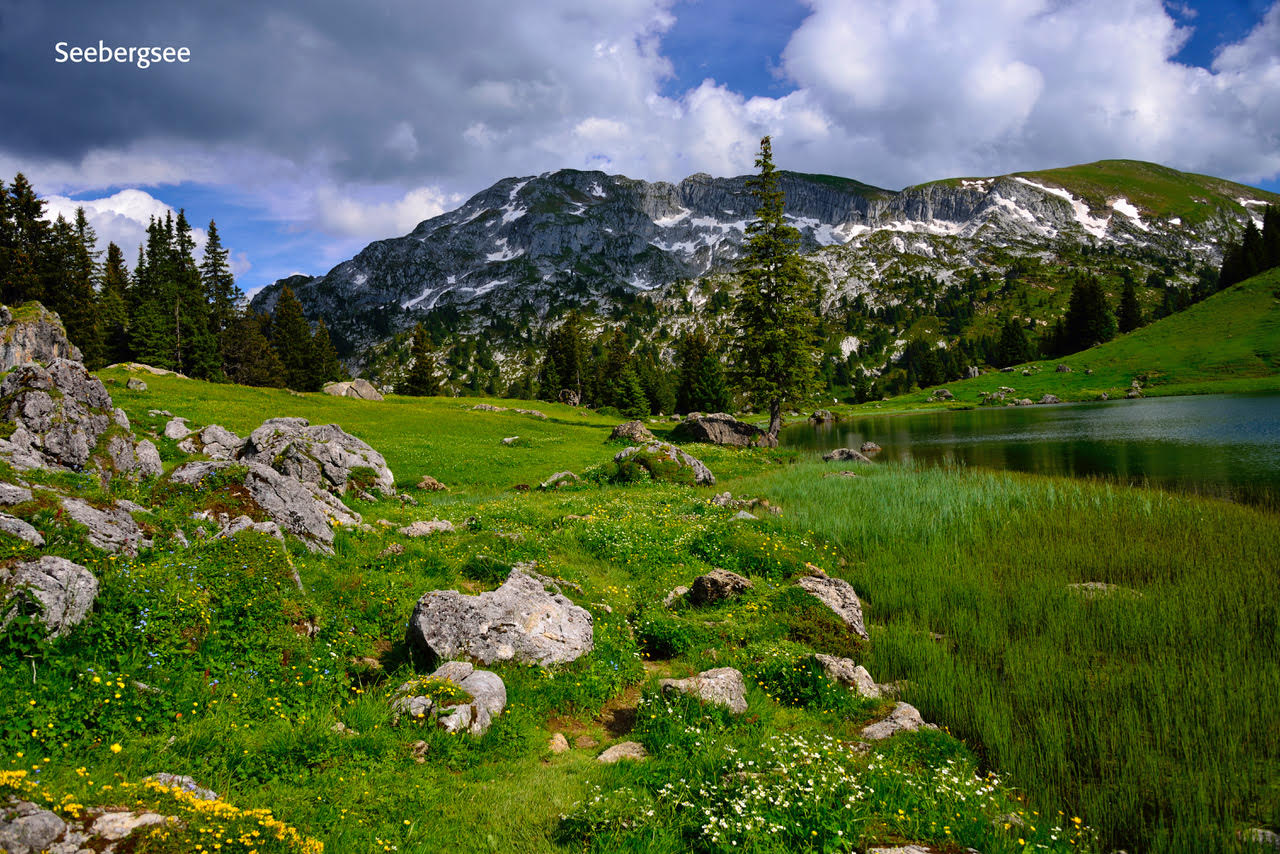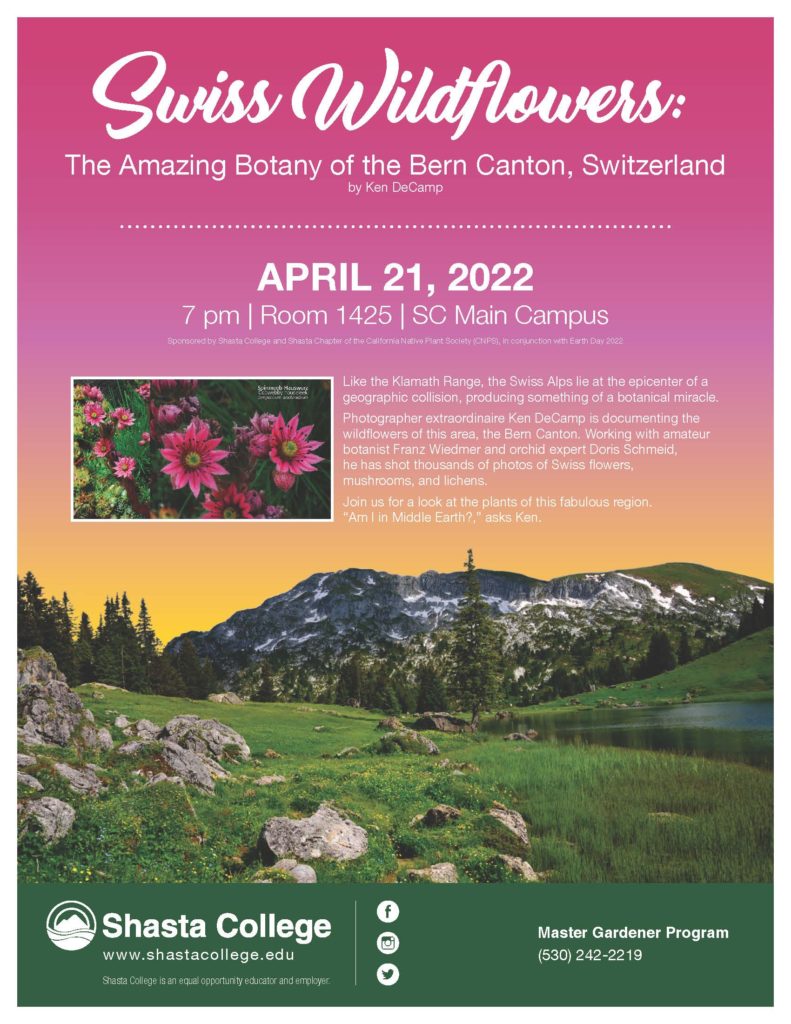
Here’s an exciting presentation, sponsored by Shasta Chapter CNPS and Shasta College, that would be a great way to kick off your Earth Day 2022 celebrations!
Photographer extraordinaire Ken DeCamp is documenting the wildflowers of the Bern Canton, Switzerland. Working with amateur botanist Franz Wiedmer and orchid expert Doris Schmeid, he has shot thousands of photos of Swiss flowers, mushrooms, and lichens. Like our Klamath Range, the Swiss Alps lie at the epicenter of a geographic collision, producing something of a botanical miracle.
“Am I in Middle Earth?” asks Ken.

Join us for a look at the plants of this fabulous region on April 21, 2022, at 7 pm, in Room 1425 on the Shasta College campus, Redding. ~Susan Libonati-Barnes

